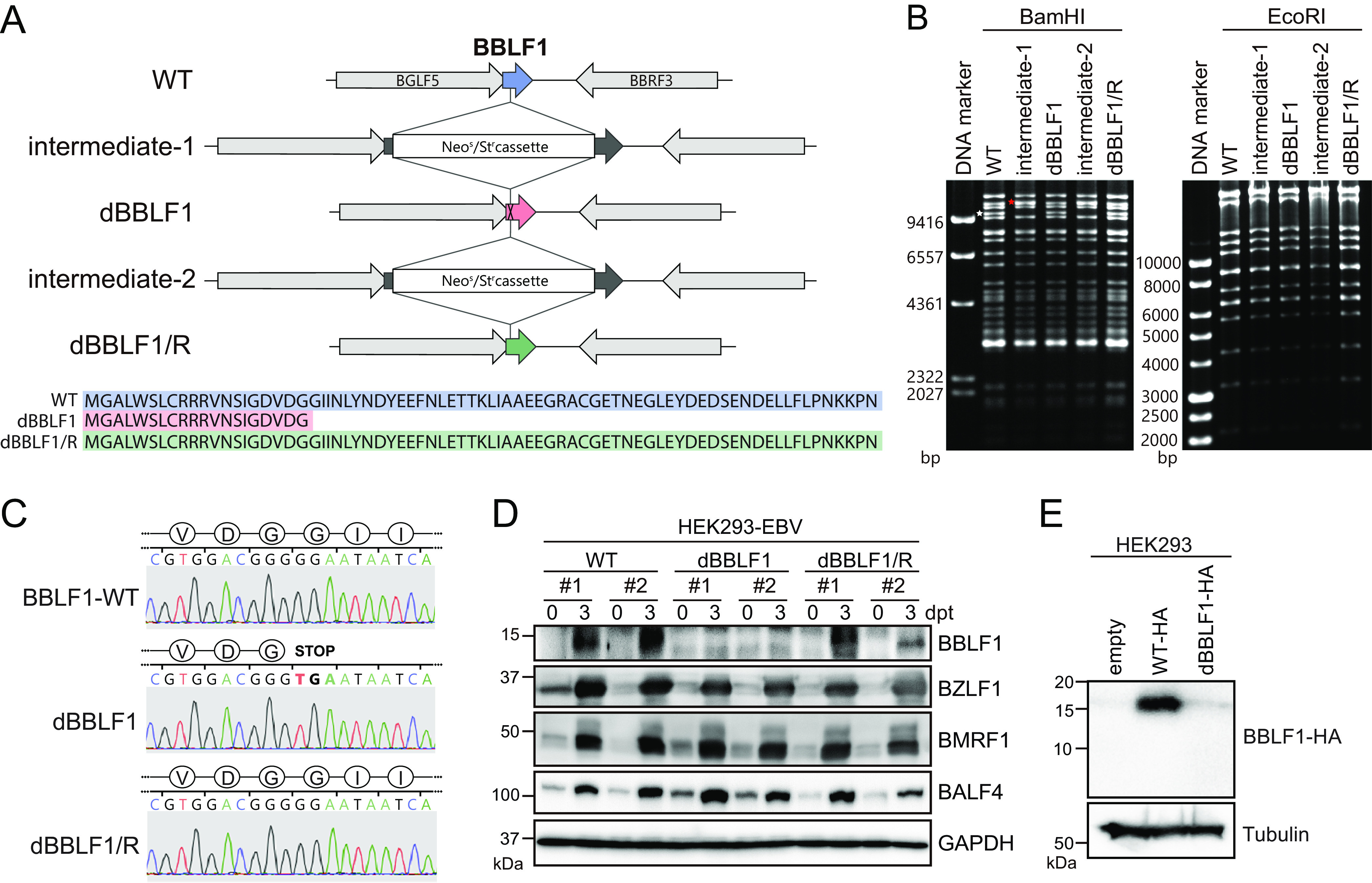FIG 2.

Generation of the BBLF1-knockout EBV mutant using the EBV-BAC system. (A) Diagram of the construction of BBLF1-knockout (dBBLF1) and -revertant (dBBLF1/R) viruses using the homologous recombination technique in E. coli. An intermediate of EBV-BAC (intermediate-1) was first created through insertion of a tandemly arranged neomycin-sensitive and streptomycin-resistance gene cassette (Neos/Str) at the 61st nucleotide of the BBLF1 gene in the WT EBV-BAC. The cassette was then replaced with a sequence of BBLF1 carrying the G61 to T61 mutation, which introduces a stop codon into the BBLF1 gene. Similarly, a revertant virus (dBBLF1/R) was generated from the dBBLF1 virus with exactly the same genetic construct as the WT. (B) Electrophoresis of digested EBV-BAC DNA. Isolated EBV-BACs (WT, dBBLF1, and dBBLF1/R) were digested through treatment with BamHI or EcoRI and then electrophoresed. In the lane containing intermediates 1 and 2 (BamHI digests), the DNA fragment containing the BBLF1 gene (indicated with a white asterisk in the WT lane) migrated more slowly due to the size of the Neos/Str cassette (indicated with a red asterisk). (C) Nucleotide sequencing of EBV-BAC DNA for the generation of the BBLF1-knockout and revertant viruses. (D) Clonal HEK293-EBV cells (WT, dBBLF1, and dBBLF1/R) were collected immediately or at 3 days post-BZLF1 transfection (dpt). The indicated expression levels of EBV and GAPDH proteins were examined through IB. (E) Expression vectors carrying WT and dBBLF1 sequences with a C-terminal HA-tag were constructed and transfected into HEK293 cells. Cells were subjected to IB using anti-HA and anti-tubulin antibodies.
